Claudia and I drive over to the eastern Sierra frequently in summer and fall, when Tioga Pass is open. We love it over there. But in the winter and spring Tioga Pass is usually closed, turning a two-and-a-half hour drive into an eight-hour drive. Until recently I had never been to Mono Lake in winter except during a couple of exceptionally-dry years when the pass stayed open later than usual – which hardly seemed like winter.
Our trip to photograph the lunar eclipse gave us an opportunity to do something we had always wanted to do: visit the east side in real winter conditions. I photographed sunrise at the Alabama Hills on Sunday morning before the eclipse, and then again on Monday morning, after the eclipse, as a storm was clearing over the Sierra.
I was struck by the beautiful sunrise light in the Alabama Hills. In summer, and even early fall, the sun rises more-or-less behind you as the face the mountains. In winter the sun rises further south, raking across the ridges of the Sierra, and bringing out the textures of the foreground boulders.
I knew, intellectually, that the sunrise light was better in winter. Ansel Adams’s photograph Winter Sunrise from Lone Pine, shows beautiful early-morning light slanting across the mountain ridges, and on my summer and fall visits I noted that the winter-angle light would make a difference, but seeing that winter light in person made a vivid impression. Of course you can make great sunrise images from the Alabama Hills at any time of year with the right conditions, but that winter sidelight adds a nice touch.
Monday afternoon we drove up to Mono Lake. We hit snow at the top of Sherwin Summit, north of Bishop, and Highway 395 was often icy or slushy between Mammoth Lakes and Lee Vining.
It was windy and cold when we reached Mono Lake. Really windy. But the lake looked striking, with green, wind-blasted water, and fast-moving clouds overhead. We decided to head to South Tufa, confident that it wouldn’t be crowded. (We saw two other people.)
The lakeshore was lined with white, but it wasn’t snow, as most of the snow near the shore had melted by then. Rather, it was salty foam stirred up by the wind and deposited on shore. Sometimes the wind would pick up pieces of this foam and blow them around, so I had to be careful to avoid getting my camera plastered with salty foam. This foam, however, provided some interesting foregrounds to accompany the dramatic sky.
The temperature got down to 14 degrees in Lee Vining that night. As I drove up Lee Vining Canyon the next morning my car’s thermometer read 8 degrees.
And there was a lot of snow in the canyon – about two feet. Why didn’t I bring my snowshoes? Post-holing through two feet of snow made it difficult to get far from the car, but I did manage to capture a few images I liked.
We needed to get home, so we made the long drive south back over Tehachapi Pass. We had a great time though. It was really fun to see the east side under real winter conditions, and having clear skies for the eclipse was a nice bonus.
— Michael Frye
Related Posts: A Lunar Experience; Photographing the Lunar Eclipse January 20th and 21st
Michael Frye is a professional photographer specializing in landscapes and nature. He is the author or principal photographer of The Photographer’s Guide to Yosemite, Yosemite Meditations, Yosemite Meditations for Women, Yosemite Meditations for Adventurers, and Digital Landscape Photography: In the Footsteps of Ansel Adams and the Great Masters. He has also written three eBooks: Light & Land: Landscapes in the Digital Darkroom, Exposure for Outdoor Photography, and Landscapes in Lightroom: The Essential Step-by-Step Guide. Michael has written numerous magazine articles on the art and technique of photography, and his images have been published in over thirty countries around the world. Michael has lived either in or near Yosemite National Park since 1983, currently residing just outside the park in Mariposa, California.

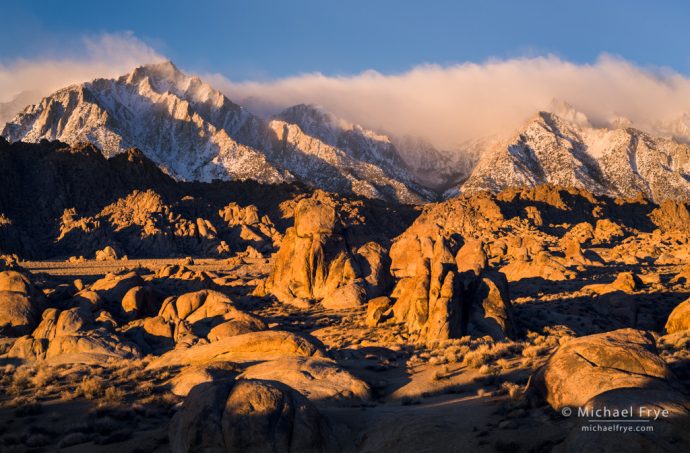
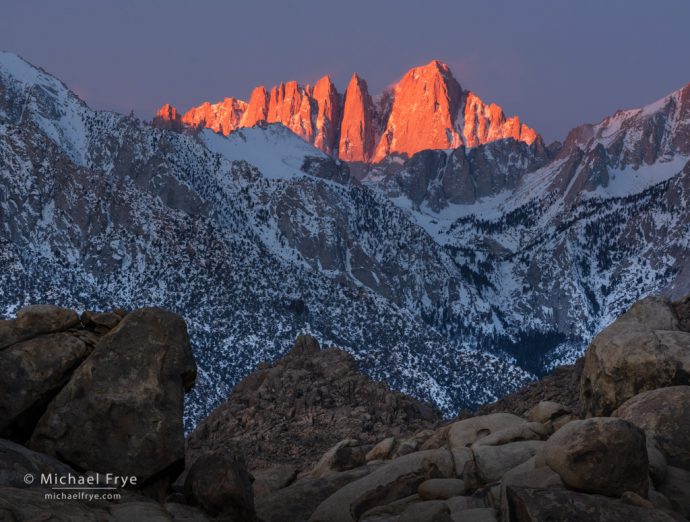
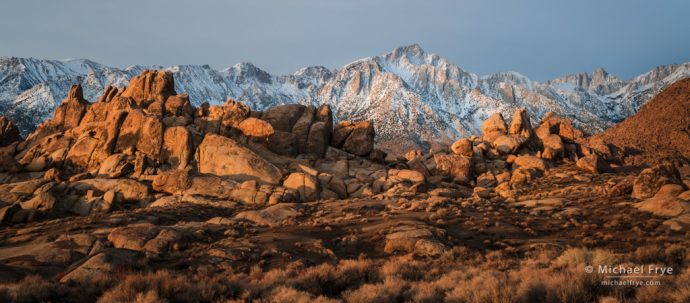
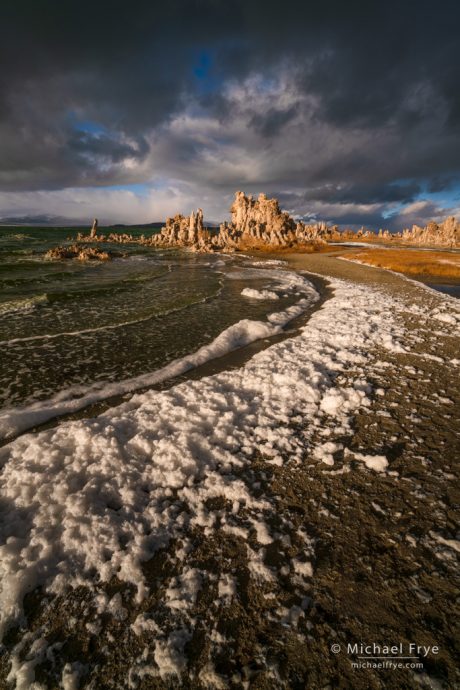
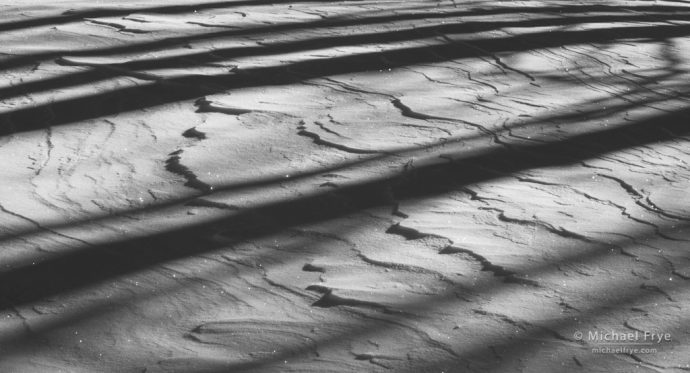
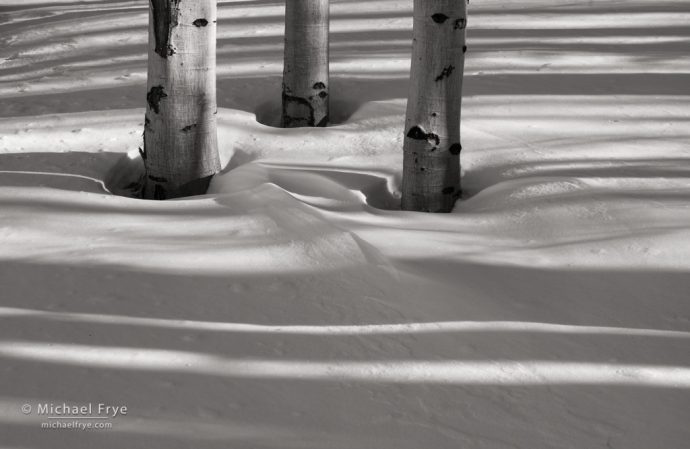








Thank you Michael for always sharing your photos and travels. It makes my day! I saw a similar photo of Alabama Hills on the front page of David Muench’s website. It still amazes me that less than 90 miles away is the lowest point in the US (Death Valley). Thanks again for some remarkable photos
Thanks John! California has lots of wonderful landscapes, and that region is pretty amazing.
It is nice to see what the Eastern Sierra looks like in snow. Very interesting about the angle of morning light from the south. Hope you had time to go to Death Valley also. Thanks for sharing.
Thanks Karl. We didn’t get to Death Valley, but maybe next time.
Beautiful, stunning photos.
One of my favorite locations.
Thanks Christopher!